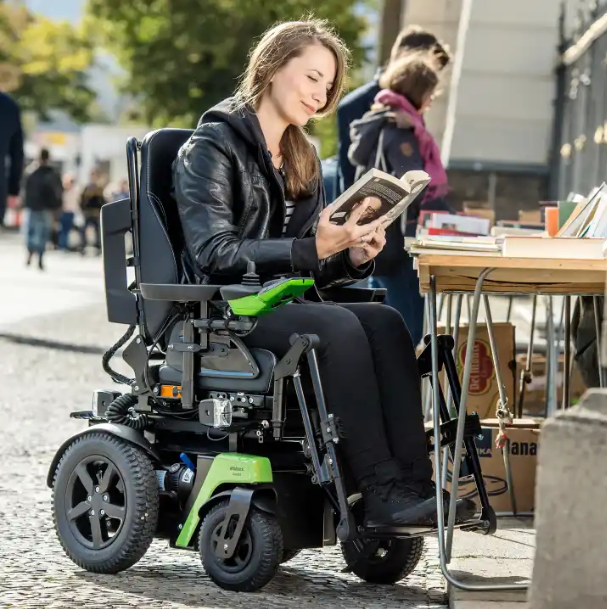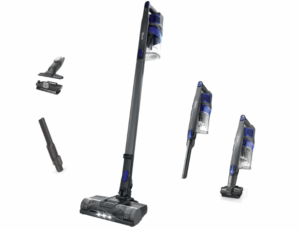A power wheelchair, also known as an electric wheelchair, is a mobility device powered by an electric motor and batteries. It is designed to assist individuals with mobility impairments, providing them with independence and the ability to move around comfortably. Power wheelchairs are equipped with a joystick or a control panel, allowing users to navigate in various directions with ease.
These wheelchairs come in different sizes and configurations to suit the specific needs of users, offering enhanced mobility both indoors and outdoors. With their advanced features and sturdy construction, power wheelchairs play a crucial role in improving the quality of life for individuals with limited mobility.

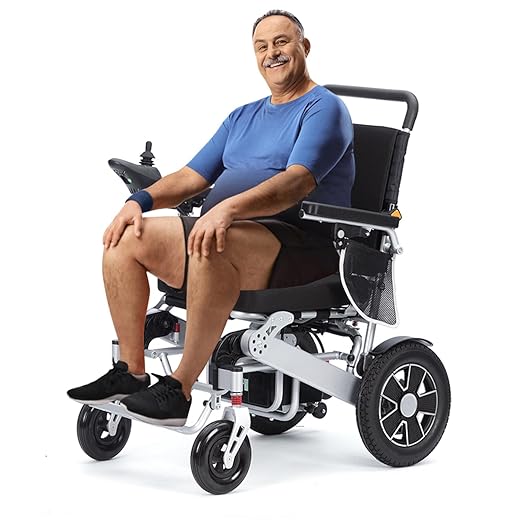
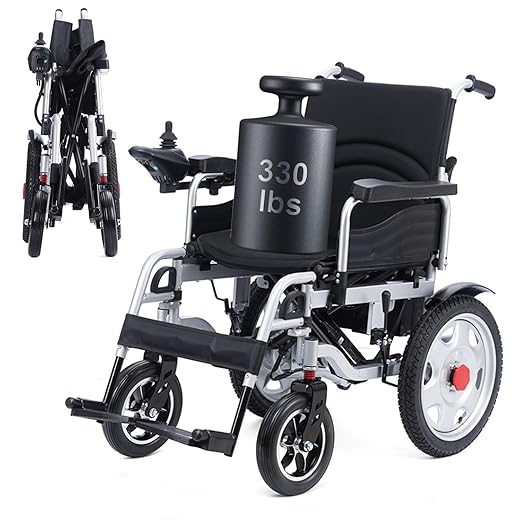



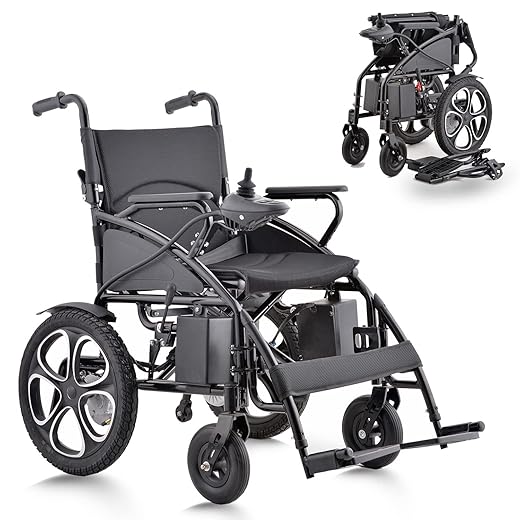

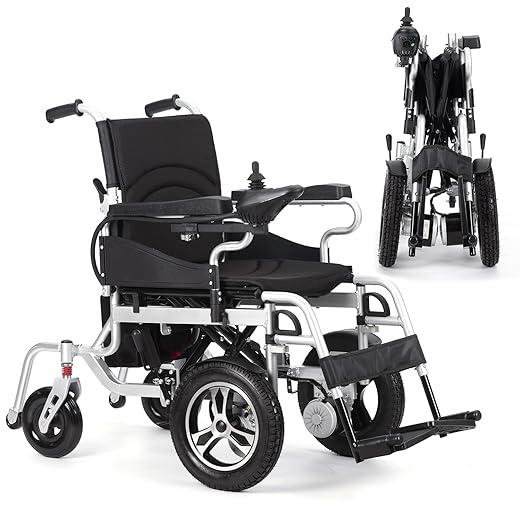
What is the purpose of a power wheelchair?
The purpose of a power wheelchair is to provide mobility and independence to individuals who have difficulty walking or moving around due to physical disabilities, injuries, or health conditions. Unlike manual wheelchairs, which require physical effort to propel, power wheelchairs are equipped with electric motors that allow users to move effortlessly using a joystick or control panel.
These wheelchairs are designed for both indoor and outdoor use, enabling users to perform daily activities, navigate through various environments, and participate in social and community activities. Power wheelchairs enhance the quality of life for people with limited mobility, enabling them to regain control over their movements and engage more actively in daily living. They are particularly beneficial for individuals with conditions such as spinal cord injuries, muscular dystrophy, multiple sclerosis, or other mobility impairments.
What class is a powered wheelchair?
Powered wheelchairs, often referred to as electric wheelchairs or power chairs, are classified as medical devices and fall under the category of mobility devices. These devices are designed to assist individuals with mobility impairments, providing them with the ability to move around independently.
In terms of classification, powered wheelchairs are regulated and categorized based on their intended use, features, and capabilities. They are typically classified as either Class II or Class III medical devices in accordance with regulatory standards such as those set by the U.S. Food and Drug Administration (FDA) in the United States.
Class II medical devices generally have a higher level of regulatory control compared to Class I devices, given their potential risks and complexities. Class III devices, which include some advanced and high-risk medical devices, are subject to the highest level of regulatory scrutiny.
The specific classification of a powered wheelchair can vary based on its features, capabilities, and intended use. It’s important for manufacturers to adhere to regulatory guidelines to ensure the safety and effectiveness of these devices for users with mobility impairments. Users should consult healthcare professionals, mobility specialists, or regulatory authorities to ensure that the chosen powered wheelchair meets appropriate safety and quality standards.
What is the difference between a manual wheelchair and a powered wheelchair?
Manual Wheelchair:
- Propulsion: Requires physical effort from the user or an attendant to move the wheelchair. Users use their arms to push the wheels manually.
- Independence: Users need upper body strength and endurance to operate a manual wheelchair. It might require assistance if the user lacks the necessary strength.
- Portability: Manual wheelchairs are generally lighter and more portable, making them easier to transport and store.
- Cost: Manual wheelchairs are usually more affordable than powered wheelchairs.
- Maintenance: They have fewer electronic components, which often leads to lower maintenance needs.
Powered Wheelchair:
- Propulsion: Powered by an electric motor and batteries, requiring no physical effort from the user. Controlled through a joystick or control panel.
- Independence: Provides greater independence, especially for individuals with limited upper body strength or stamina. Users can move without external assistance.
- Portability: Powered wheelchairs are bulkier and heavier due to the motor and batteries, making them less portable than manual wheelchairs.
- Cost: Powered wheelchairs are more expensive due to their complex electronic systems.
- Terrain: Powered wheelchairs are suitable for both indoor and outdoor use, and some models are designed to handle rough terrains.
Ultimately, the choice between a manual and a powered wheelchair depends on the user’s specific needs, mobility limitations, lifestyle, and preferences.
Who benefits from a power wheelchair?
Power wheelchairs are beneficial for individuals with a range of mobility impairments and conditions, including:
- Spinal Cord Injuries: People with spinal cord injuries often use power wheelchairs as they provide independent mobility without relying on upper body strength.
- Muscular Dystrophy: Individuals with muscular dystrophy, a group of genetic disorders that cause progressive muscle weakness, find power wheelchairs helpful, especially as the condition progresses.
- Multiple Sclerosis (MS): MS can cause muscle weakness and coordination problems. Power wheelchairs assist individuals in maintaining their mobility and independence.
- Cerebral Palsy: People with cerebral palsy, a group of disorders affecting movement and muscle tone, use power wheelchairs to navigate their surroundings comfortably.
- Amyotrophic Lateral Sclerosis (ALS): ALS, a progressive neurodegenerative disease, leads to muscle weakness and eventually paralysis. Power wheelchairs enable ALS patients to maintain their mobility and independence.
- Post-Stroke Patients: Individuals recovering from strokes or dealing with paralysis due to stroke benefit from power wheelchairs during their rehabilitation process.
- Chronic Fatigue Syndrome: Some individuals with chronic fatigue syndrome, which causes extreme fatigue, muscle pain, and other symptoms, use power wheelchairs to conserve energy and participate in activities.
- Arthritis: People with severe arthritis, which limits joint movement and causes pain, often find power wheelchairs helpful for reducing strain on affected joints.
- Cardiopulmonary Conditions: Certain heart and lung conditions may cause fatigue and shortness of breath, making power wheelchairs a valuable aid for conserving energy.
- Other Mobility Limitations: Power wheelchairs are suitable for individuals with various mobility limitations due to accidents, injuries, amputations, or congenital conditions.
In summary, power wheelchairs offer valuable assistance to individuals with diverse conditions that affect their ability to move, allowing them to maintain independence and participate in daily activities.
What are the three types of power wheelchairs?
There are three main types of power wheelchairs, each designed to cater to different mobility needs and lifestyles:
Indoor Power Wheelchairs:
- Purpose: Designed primarily for indoor use, these wheelchairs are compact and maneuverable, making them ideal for navigating tight spaces and doorways within homes, offices, and stores.
- Features: Lightweight, compact size, tight turning radius, and often have a smaller frame to fit through narrow spaces.
- Use: Best suited for individuals who primarily need assistance indoors, such as moving around the house or shopping in stores.
Outdoor Power Wheelchairs:
- Purpose: Built for outdoor use, these wheelchairs are rugged and durable, capable of handling rough terrains and uneven surfaces.
- Features: Larger wheels, robust suspension systems, and sturdy frames. Some models have features like headlights, taillights, and higher ground clearance.
- Use: Ideal for individuals who enjoy outdoor activities, going to parks, maneuvering on sidewalks, or navigating through uneven terrains like gravel paths or grassy areas.
All-Terrain Power Wheelchairs:
- Purpose: Specifically designed to handle challenging terrains and off-road environments, these wheelchairs provide the most versatility and freedom.
- Features: Heavy-duty construction, large and rugged wheels, advanced suspension systems, and powerful motors. They can handle various terrains, including rocky paths, sand, snow, and steep inclines.
- Use: Suited for adventurous users who want to explore off-road locations, nature trails, beaches, or engage in outdoor sports like hunting or fishing.
The choice between these types depends on the user’s lifestyle, mobility requirements, and the environments they intend to navigate. Some power wheelchairs are also designed with a combination of indoor and outdoor capabilities to offer a balance of versatility. Users should consider factors such as terrain, home environment, transportation needs, and personal preferences when selecting the most suitable type of power wheelchair.
Is a power wheelchair assistive technology?
Yes, a power wheelchair is considered assistive technology. Assistive technology refers to any device, equipment, or system that enhances the capabilities of individuals with disabilities, enabling them to perform tasks that might otherwise be difficult or impossible. Power wheelchairs fall into this category because they assist people with mobility impairments, providing them with the ability to move around independently.
Power wheelchairs use electric motors and batteries to propel the chair, allowing individuals with limited or no mobility in their lower limbs to move freely. They are a vital assistive technology tool for people with conditions such as spinal cord injuries, muscular dystrophy, multiple sclerosis, and other mobility impairments. These devices significantly improve the quality of life and independence of individuals who use them, enabling them to participate in various activities and engage more fully in society.
What is pros and cons of using power wheelchair?
Certainly, using a power wheelchair offers various advantages and disadvantages, depending on individual needs and circumstances. Here’s a breakdown of the pros and cons of using a power wheelchair:
Pros:
- Increased Mobility: Power wheelchairs provide independent mobility to individuals with limited or no ability to walk, allowing them to move around freely.
- Enhanced Independence: Users can perform daily activities, engage in social interactions, and participate in community events without relying on others for assistance.
- Reduced Physical Strain: Power wheelchairs eliminate the need for manual propulsion, reducing strain on upper body muscles and joints, especially beneficial for individuals with limited upper body strength.
- Versatility: Modern power wheelchairs are designed for both indoor and outdoor use, offering users the freedom to navigate various environments.
- Improved Quality of Life: By promoting independence and social engagement, power wheelchairs contribute significantly to the overall well-being and quality of life of users.
- Customization: Power wheelchairs can be customized with various features and accessories to suit individual needs, providing tailored solutions for different users.
- Efficiency: Power wheelchairs can cover longer distances in a shorter time compared to manual wheelchairs, improving efficiency in daily activities.
Cons:
- Cost: Power wheelchairs are more expensive than manual wheelchairs, making them a significant financial investment. Insurance coverage and funding options can help offset costs.
- Maintenance: Power wheelchairs require regular maintenance to ensure optimal performance. Battery charging, tire checks, and electronic system maintenance are necessary tasks.
- Limited Battery Life: Users need to monitor battery levels and plan their activities accordingly. Running out of power while away from home can be inconvenient.
- Accessibility Challenges: Not all environments are designed to accommodate power wheelchairs. Steep ramps, narrow doorways, and lack of elevators in some public places can limit accessibility.
- Transportation Difficulties: Power wheelchairs are often heavier and bulkier than manual wheelchairs, making them challenging to transport, especially in smaller vehicles.
- Dependence on Electronics: Power wheelchairs rely on electronic systems. Technical malfunctions or battery failures can temporarily disrupt mobility until repairs are made.
- Learning Curve: Users, especially those new to power wheelchairs, may require time to learn how to operate the joystick or control panel effectively.
In summary, while power wheelchairs offer significant advantages in terms of mobility and independence, they also come with considerations such as maintenance, accessibility challenges, and cost. The decision to use a power wheelchair should be based on individual needs, lifestyle, and preferences, weighing the benefits against the potential challenges.
Factors to consider when buying power wheelchair
When buying a power wheelchair, it’s crucial to consider various factors to ensure that the chosen device meets your specific needs and provides optimal comfort, safety, and independence. Here are key factors to consider:
- **Type of Mobility Impairment: Consider the nature and severity of your mobility impairment. Different power wheelchairs are designed to address specific needs, such as limited upper body strength, quadriplegia, or specific postural requirements.
- **Indoor vs. Outdoor Use: Determine where you plan to primarily use the wheelchair. Some power wheelchairs are designed for indoor use, offering better maneuverability in tight spaces, while others are suitable for outdoor use with enhanced stability and larger wheels for various terrains.
- **Seating and Posture Support: Evaluate the seating options, cushioning, and postural support features. Consider adjustable seat widths, depths, backrest angles, and additional supports like lateral supports and headrests for optimal comfort and postural support.
- **Weight Capacity: Ensure that the power wheelchair can support your weight and any additional accessories or items you might carry. Exceeding the weight capacity can affect the performance and safety of the wheelchair.
- **Battery Life and Range: Consider the battery life and range per charge. This is especially important if you plan to use the wheelchair for extended periods outdoors or during outings. Assess how long the battery lasts on a single charge and how easily the batteries can be replaced or charged.
- **Maneuverability: Evaluate the wheelchair’s turning radius, especially if you plan to use it indoors or in confined spaces. A smaller turning radius provides better maneuverability.
- **Transportation and Storage: Consider the wheelchair’s size and weight, especially if you need to transport it in a vehicle. Some power wheelchairs are designed to be easily disassembled or folded for convenient storage and transportation.
- **Controls and Operation: Assess the ease of use of the control interface, typically a joystick. Consider your ability to operate the controls comfortably and accurately. Some wheelchairs offer alternative control options for individuals with specific needs.
- **Adjustability and Customization: Look for a wheelchair that offers adjustable features, allowing you to customize the seating, armrests, footrests, and other components to your specific requirements.
- **Insurance Coverage and Funding: Check with your healthcare provider, insurance company, or government programs to understand the coverage options available for power wheelchairs. Some funding sources might have specific requirements or limitations on the type of wheelchair covered.
- **Warranty and Support: Research the manufacturer’s warranty, customer support, and availability of service centers. A reliable warranty and good customer support can be essential for addressing issues and ensuring long-term satisfaction.
- **User Reviews: Read user reviews and testimonials to learn about the experiences of other users with similar mobility needs. Real-life experiences can provide valuable insights into the performance and reliability of specific models.
- **Test Drives and Demonstrations: Whenever possible, test drive different models to assess their comfort, maneuverability, and ease of use. Most mobility equipment providers offer demonstrations or rental options.
By carefully considering these factors and consulting with healthcare professionals and mobility specialists, you can make an informed decision and choose a power wheelchair that best suits your needs and enhances your quality of life.
Why is a power wheelchair better than a scooter?
The choice between a power wheelchair and a scooter depends on individual needs, mobility requirements, and lifestyle preferences. Both devices have their advantages, and what might be better for one person might not be suitable for another. Here are some reasons why a power wheelchair might be preferred over a scooter in certain situations:
- Maneuverability: Power wheelchairs tend to have a smaller turning radius compared to scooters, making them more maneuverable in tight spaces, crowded areas, and indoor environments like homes or stores.
- Indoor Use: Power wheelchairs are designed with indoor use in mind. They can easily navigate through standard doorways and tight spaces, allowing users to move freely within their homes.
- Customization: Power wheelchairs can be customized with various seating options and postural support features to provide a tailored and comfortable experience for users with specific mobility or health needs.
- Leg and Foot Rests: Power wheelchairs usually come with adjustable leg and foot rests, providing users with better support and comfort, especially during extended periods of use.
- Postural Support: Some power wheelchairs offer advanced postural support features, making them suitable for individuals with complex postural needs or specific medical conditions.
- Ease of Operation: Power wheelchairs are controlled using a joystick, which can be easier for some users to operate, especially those with limited upper body strength or dexterity issues.
- Stability: Power wheelchairs often have a lower center of gravity, providing better stability, which can be particularly beneficial for users with balance or coordination challenges.
- Increased Independence: For individuals with significant mobility impairments, power wheelchairs offer a higher level of independence, allowing them to move around without the need for assistance.
However, it’s essential to note that scooters have their advantages too, such as higher speed capabilities and longer battery life, making them suitable for outdoor use and covering more extensive distances.
Ultimately, the choice between a power wheelchair and a scooter should be made after considering individual mobility needs, lifestyle, the environment in which the device will be used, and personal preferences. Consulting with a healthcare professional or mobility specialist can help individuals make an informed decision based on their specific requirements.
How long does power wheelchair last?
The lifespan of a power wheelchair can vary widely based on several factors, including the quality of the wheelchair, the level of usage, maintenance, and the care taken by the user. On average, a well-maintained power wheelchair can last between 5 to 10 years. Here are some key factors that influence the lifespan of a power wheelchair:
- Quality of Construction: High-quality power wheelchairs made by reputable manufacturers tend to have better durability and longevity. Cheaper, lower-quality models might wear out more quickly.
- Usage Frequency: The more frequently the power wheelchair is used, the faster it will experience wear and tear. Someone who uses their wheelchair daily will likely see more significant wear compared to occasional users.
- Maintenance: Regular maintenance, including checking and lubricating moving parts, inspecting the batteries, and ensuring proper tire inflation, can extend the lifespan of a power wheelchair. Neglecting maintenance can lead to quicker deterioration.
- Battery Life: The batteries in a power wheelchair typically need replacement every 1 to 2 years. Proper charging habits and timely battery replacements are crucial for maintaining the wheelchair’s overall performance.
- Environment: The environment in which the wheelchair is used plays a role. Rough terrains, exposure to extreme weather conditions, and constant outdoor use can contribute to faster wear and tear.
- User’s Weight: The weight of the user affects the strain on the wheelchair’s components. Heavier users might put more stress on the motor, tires, and frame, potentially shortening the wheelchair’s lifespan.
- Upgrades and Repairs: Sometimes, users opt to upgrade certain components or make repairs, extending the wheelchair’s life. Upgrading parts like the joystick or seating system can improve functionality and user experience.
- Technological Advances: Advancements in technology might make newer power wheelchairs more efficient, comfortable, and feature-rich. Users might choose to replace their older wheelchair with a newer model to benefit from these advancements.
It’s important to note that insurance policies or warranties may cover repairs or replacements under certain conditions, so users should be aware of their coverage and make use of it when necessary. Regular inspections and timely repairs can help maximize the lifespan of a power wheelchair and ensure safe and efficient mobility for the user.
Do I need a power wheelchair?
Determining whether you need a power wheelchair is a decision best made in consultation with healthcare professionals, such as your primary care physician, physiotherapist, or an occupational therapist. These professionals can assess your mobility needs, consider your medical condition, evaluate your physical abilities, and provide personalized recommendations. However, here are some signs that might indicate a power wheelchair could be beneficial:
- Limited Mobility: If you have limited mobility that significantly affects your ability to walk or move independently, a power wheelchair can provide you with greater freedom and independence.
- Fatigue and Weakness: If you experience fatigue or weakness in your arms or legs, making it challenging to propel a manual wheelchair, a power wheelchair can help conserve your energy.
- Balance Issues: If you have balance issues, a power wheelchair can provide stability and reduce the risk of falls, especially when navigating uneven terrain or crowded spaces.
- Chronic Pain: If you experience chronic pain, walking or using a manual wheelchair might exacerbate your pain. A power wheelchair can help alleviate the strain on your body.
- Limited Endurance: If you have limited endurance due to a medical condition, using a power wheelchair can enable you to engage in activities for more extended periods without getting fatigued quickly.
- Safety Concerns: If using a manual wheelchair poses safety concerns, such as the risk of tipping over or navigating steep slopes, a power wheelchair with enhanced stability features can provide a safer mobility solution.
- Increased Independence: If you desire greater independence and the ability to move around without relying on others for assistance, a power wheelchair can significantly enhance your freedom and confidence.
Before making a decision, it’s essential to discuss your mobility challenges with healthcare professionals. They can conduct assessments, recommend appropriate mobility aids, and ensure that you receive the most suitable solution tailored to your specific needs and preferences. Additionally, involving occupational therapists in the process can help assess your home environment to ensure it’s conducive to using a power wheelchair safely.
You May Also Like These Deals!
SofaBaton X1S Universal Remote Review – Control Everything with One Smart Remote
Add Your Heading Text Here Products recommended in the post...
Read More☕ Ninja Luxe Café 3-in-1 Coffee Machine Review – Barista-Quality Brews at Home
🌞 Quick Introduce If you dream of café-quality drinks at...
Read More🌬️ BLUEAIR Air Purifier Review – Smart, Stylish, and Powerful for Large Homes
Quick Introduce Air quality matters more than ever—whether it’s dust,...
Read MoreTired of Pet Hair? This Shark Cordless Pet Vacuum Might Be Your New Favorite Tool
Say hello to your new favorite cleaning weapon: the Shark...
Read MoreProducts recommended in the post contain affiliate links. We may receive a commission when you buy something through our posts.
Why Trust Us
You will find what you are looking for at Black Friday Weeks. From classic to luxury brands, you'll find both. We will help you to select appliances that fit your needs, budget and lifestyle. Whether you want to stop by to learn more — or plan to make a major purchase — we’ll treat you like family and assist you every step of the way. Shop with us today to receive friendly and experienced help along the way.

